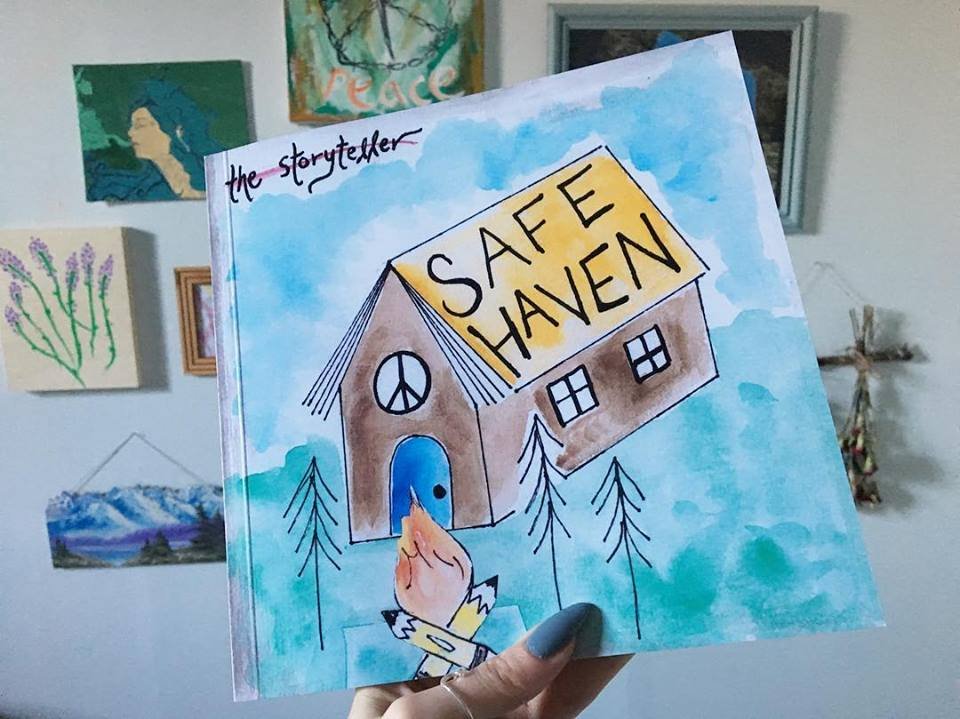
Floetry
by Annalissa Crisostomo
Deepak Chopra said that self-intimacy was the path to true healing; and I don’t know anything that brings me closer to mySelf than my poetry. When I write, I move with soft, tender and affectionate care; it feels like a hug, a date, or a passionate slow dance in the rain.
Writing, for me, is an idyllic love affair, a way of keeping the romance alive.

These beautiful illustrations were done by the very talented Chelsea Nelson.
Check out her website or follow her on instagram !
Featured Works
Featured in Safe Haven by the Storyteller
In an online course on Digital Allyship, the instructor, Monica Cadena, invites comments and questions after talking about her experiences and strategies for getting published in online blogs. One participant, in a slightly judgemental manner, points out a trend of new writers “bragging” about small publications by tagging them in their instagram bios. I will never forget Monica’s response (loosely paraphrased): “Why not? Support your local magazines and papers! Big yourself up! I wasn’t always getting published and recognized in this way. Give them and yourself some love”.
In that spirit, proudly my first published piece was a poem called “Why Must I be Silenced?” by a Small Canadian group called ‘the Storyteller; as a collective they provided spaces for people to share any story about struggle and/or resilience. Although my poem was slightly altered in publication, It was the first time I really saw myself as a writer; and as having an imprint in this greater story of life.
Featured in New Sociology: Journal of Critical Praxis, Narratives of Aliveness: Surrendering to Our Inner Worlds (Jun 2023)
Daydreamingis a spoken word poem that captures the intimate moment in which a woman fantasizes about having sex with her ‘crush’. Although romantic and tender at times, this piece is not a snapshot of ‘everlasting love’ between two people, but of the reticent revolution of self-love, self-indulgence, and self-surrender that invokes sexual daydreams. brown’s (2019) ‘Pleasure Activism’ observes the sensual imagination as a private and safe place where we develop fantasies of what we desire –what we want to doto others, or what we want doneto usby othersor what we want to witness, while acknowledging that these fantasies are heavily influenced by cultural social norms and intersecting systems of hierarchy that can perpetuate the disempowerment of ourselves and others. This leads brown to recognize sexual fantasies as sites for radical healing and liberation –as a quiet space where we get to intentionally work on developing new fantasies and generate power in and/or out of the bedroom. Inspired by brown’s work, Daydreamingchallenges androcentric and suppressive cultures of sexual exploitation and repression by (re)imagining and (re)claiming sex as something full of reciprocity, rapture, and vocality, thus disrupting the long-standing history of silencing survivors of sexual trauma and the patriarchal view that sexual pleasure is primarily for white straight cis men. As such, the poem embodies counter-hegemony, not only offering us an opportunity to see, feel, sense, and imagine differently, but to also (re)shape “our real-life desires andpractices”, as brown (2019) puts it (p. 222). By creating space to envision new imaginary landscapes of sexual healing, sexual empowerment, and sexual liberation, Daydreamingreminds us of the power and potential of the radical sexual imagination to liberate a part of our (sexual) selves from within. It seeks to celebrate the political and liberating process of shamelessly luxuriating in our own erotic imaginations to activate our inner sexual worlds, and thus to produce social change







